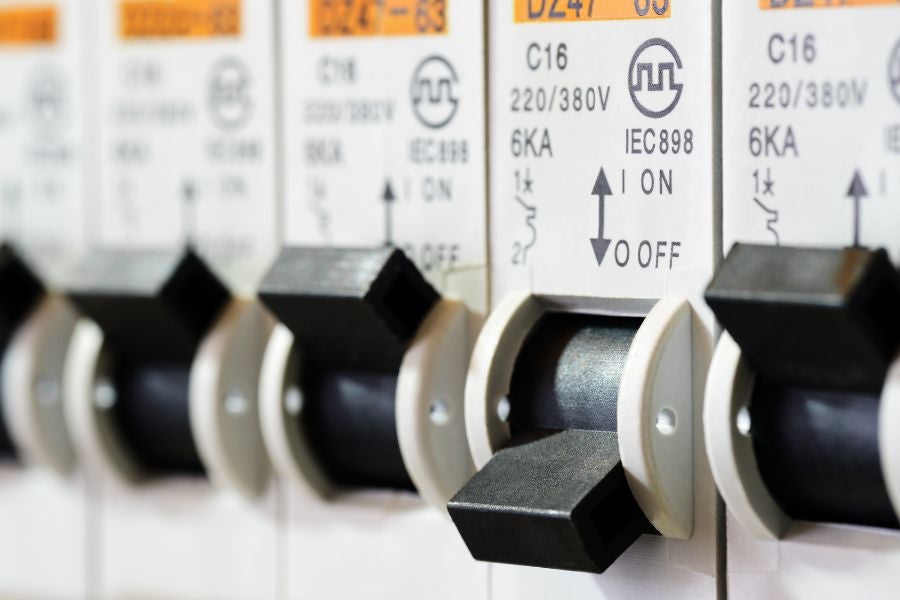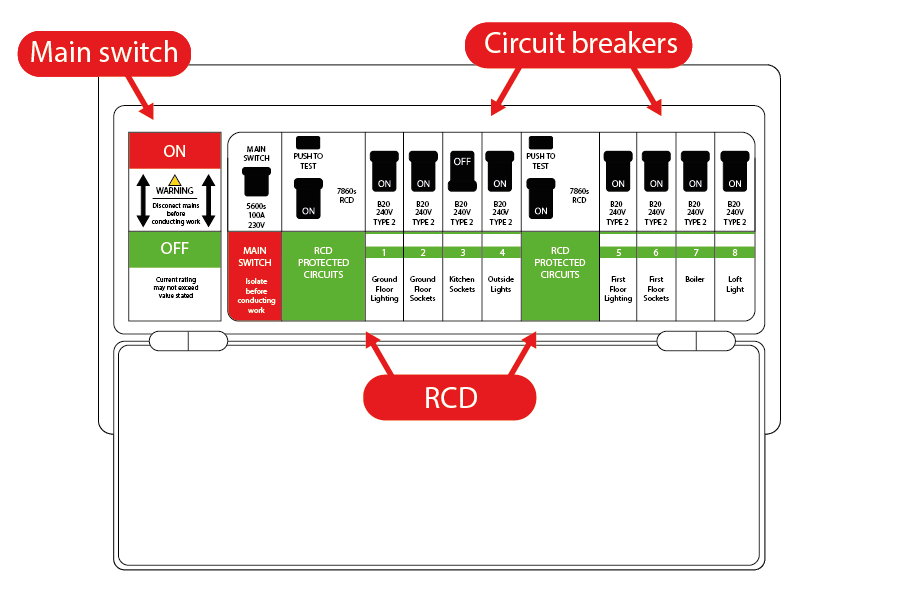Electrical advice
How to Fix a Tripped Fuse
14 Jul 2025 • 6 minutes


Has your fuse box tripped? Don’t be left in the dark any longer.
Whether your mains have tripped, meaning your electricity has gone down, or an individual circuit breaker has tripped, in this guide we talk you through how to fix a tripped fuse switch and find what could be causing it.
In a lot of cases, you can fix this by simply going to the fuse box and flicking a switch back to the “on” or “green” position. However, it’s important to be safe before you do this yourself.
Before we get down to business, it’s important to remember that any electrical work should be carried out by a certified electrician, who has the right level of competence to undertake the work safely.
Please keep in mind that while it’s perfectly safe to touch your fuse box, faulty electrics are very dangerous. So, before you start any work, you should ensure that the right risk assessments are carried out so all work can be completed as safely as possible.
Before you start any work, you should consider:
If you answer yes to any of the above, or you’re not feeling confident in your ability to carry this work, please seek the help of a qualified electrician.
Fixing a tripped fuse (or circuit breaker to use its proper name) can be really straightforward and can be resolved by following these four simple steps:
It’s important to know where to find your fuse box (consumer unit). In most cases, you’ll find it in a garage or utility room, somewhere accessible so you can find it in an emergency.

When you look at your fuse box (consumer unit), you’ll notice that one or more of the switches are down in the “off” position. Usually, each switch will have a label, so you should be able to tell straight away where in your home it’s linked to.

In some cases, these labels may not be accurate. If you think this may be the case it’s best to call a qualified electrician.
Return any switches in the off position to the on position. Keep in mind that your Residual Current Device (RCD) may have flipped to the off position, too.
An RCD, or Residual Current Device to give it its full title, is an important safety feature for your home.
An RCD keeps you safe against injury and death by electric shock by detecting an imbalance between the outgoing and incoming total electrical current within a given number of circuits.
It works on the understanding that if there’s a difference in the electricity coming in against the electricity going out, then the electricity must have gone somewhere. This is what's known as a ‘residual current’ or ‘earth leakage’.
So if you’re doing some DIY and accidentally cut or drill through a cable, your RCD will kick in so that the electricity stops before it gets to you, meaning the circuit will break and you’ll stay safe.

This should mean that your power is now back on. If your switches don’t stay up, then continue with the remaining steps.
Top tip 💡: If none of the switches are down when you inspect your fuse box (consumer unit), it may mean you’ve had a power cut. Check with your neighbours to see if they’re having the same problem, or contact your energy provider to see if they’re aware of it.
The breaker within the fuse box that’s off or in the middle position is the breaker that has tripped. Once you’ve found this tripped fuse, head to that area of your home to start testing which appliance is causing the problem.
To identify the culprit, start by unplugging all appliances in the affected area.
Once you’ve unplugged all your appliances, make sure the breaker within the fuse box is switched to “on” and then, one by one, individually plug in and switch each appliance back on to troubleshoot which one is causing the fuse to trip.
If the power trips again after plugging in a specific item, you’ve likely found the source of the problem.
If you’ve followed all of these steps and your circuit is still tripping, it’s best to get in touch with one of our electricians who can help you get to the bottom of the problem.
In most cases, there’ll be a simple explanation as to why your circuit breaker or RCDs keep tripping. Usually, tripped fuses can be tracked to their location within the home, and you’re then able to work out what appliance was causing it to trip.
However, if you find that your fuse keeps tripping after following our instructions above, then you may discover that the problem is with the fuse box itself. If this is the case, you’ll need to find a qualified electrician to look at this for you.
There are several of reasons why your fuse box might trip, the most common ones include:
To help keep your electricity running smoothly and avoid unexpected trips, try following these simple tips:
Don’t plug too many high-powered appliances into the same socket or extension lead. Spread out your devices to prevent overwhelming the circuit.
Faulty or damaged appliances are a common cause of tripped electrics. Look out for frayed cords, burn marks, or unusual smells, and stop using any item that looks unsafe.
Regularly cleaning and servicing your appliances can help them run more efficiently and safely. A good example of this would be ensuring that you regularly remove the lint from your tumble dryer.
Extension cords are handy, but they shouldn’t be a permanent solution. Over-reliance on them can lead to overloading or overheating, so use them only when necessary and never daisy-chain them together.
If you’ve followed all the above steps and your fuse keeps tripping, then it’s time to get a qualified electrician on the case.
With Ding, you’ll have access to HomeServe’s qualified electricians for £5 per month. No ringing around and waiting about, just upfront pricing and availability to suit you.
Join Ding today, and book your job from £125.
Our help & advice articles cover Plumbing, Home heating, Electrical, Energy-saving and Home maintenance.